Korean living room design embraces a unique blend of simplicity, functionality, and tradition, creating spaces that are both serene and inviting. The minimalist aesthetic, often defined by low furniture and neutral tones, transforms living areas into havens of calm. Whether it's the integration of natural light or the warmth of wooden accents, every element is carefully curated to promote balance and tranquility. These 15 thoughtful Korean living room ideas don't just make a room look good—they make it feel like home, perfectly aligning with modern needs for comfort and practicality.
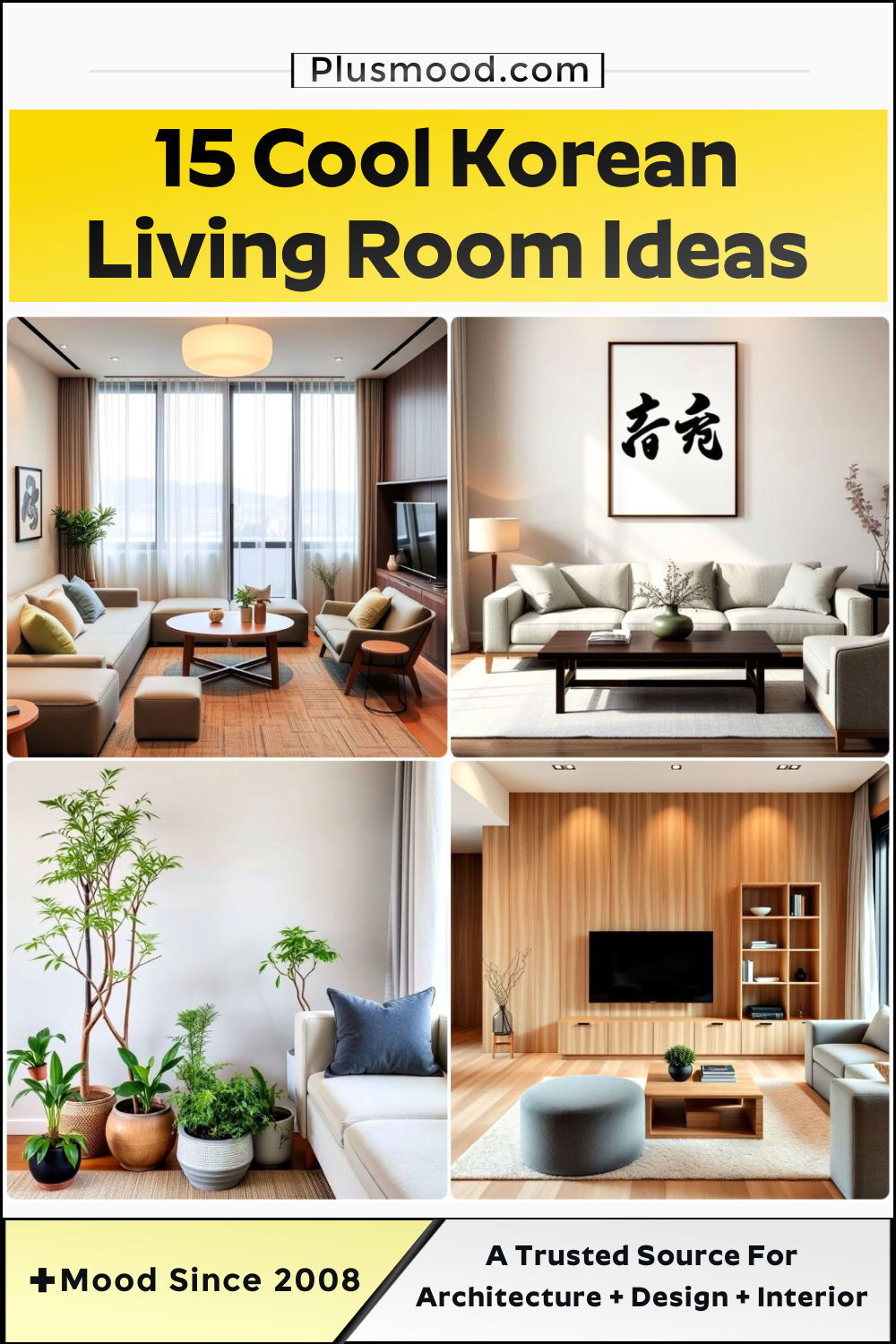
1. Minimalist Aesthetic with Low Furniture
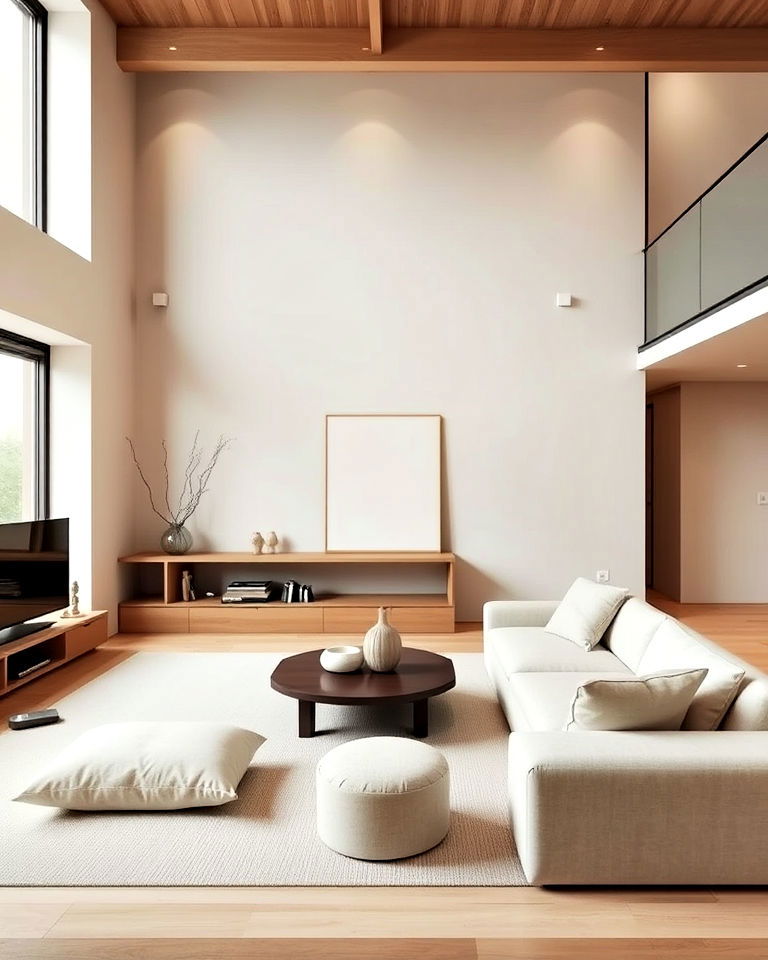
Incorporating low furniture is a hallmark of Korean living room design. Opt for a low-sitting sofa or floor cushions to create a space that feels intimate and grounded. This minimalist aesthetic maximizes the use of open space, making the room feel airy and peaceful. The absence of excessive decor and clutter enhances a sense of calm, offering a retreat-like atmosphere. Choose neutral tones like beige or soft grays for a serene, modern look.
2. Embrace Natural Light
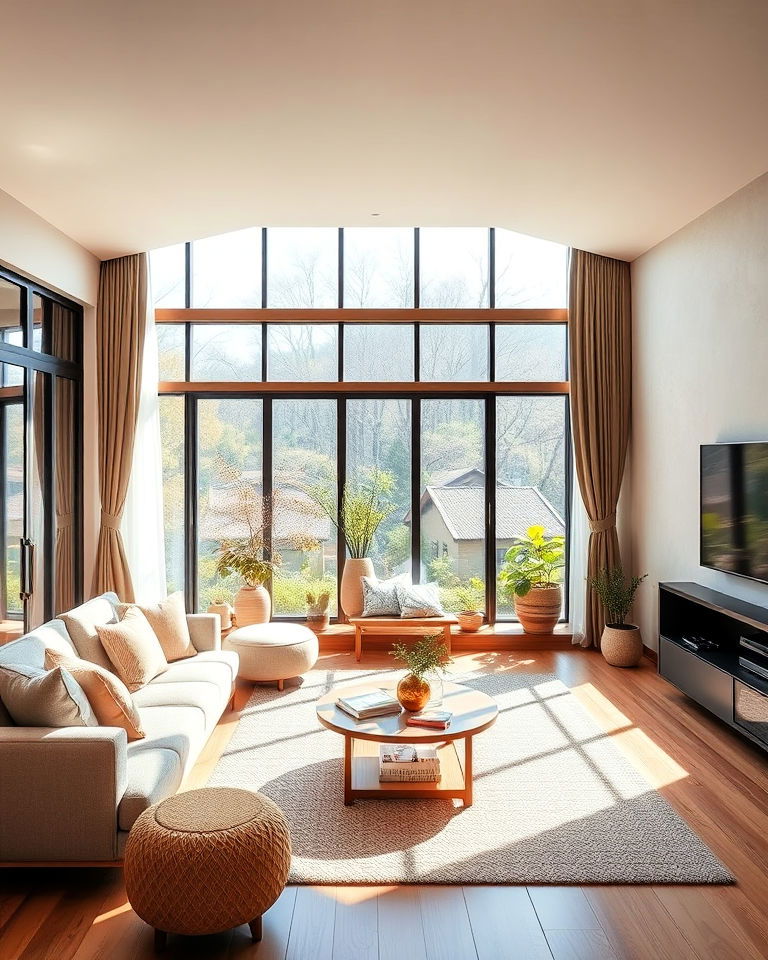
A well-lit living room is essential in Korean design, where natural light plays a central role. Large windows without heavy curtains allow the room to bathe in sunlight. The soft illumination not only makes the space feel open but also brings warmth, making it more welcoming, especially when paired with the right living room paint colors. Light enhances natural elements like wooden floors and furniture, tying the space to the beauty of the outdoors, even indoors.
3. Incorporate Floor Heating (Ondol)

Create a cozy, minimalist vibe with a Korean living room design. Incorporating ondol, the traditional Korean floor heating system, not only adds warmth but also encourages floor seating. Many Korean homes feature low tables where families can sit on cushions and enjoy a cozy, communal experience. This setup blends comfort and practicality, offering an authentic, functional space for relaxation. The heated floor system creates a unique ambiance, especially in colder months.
4. Sliding Doors for Flexibility
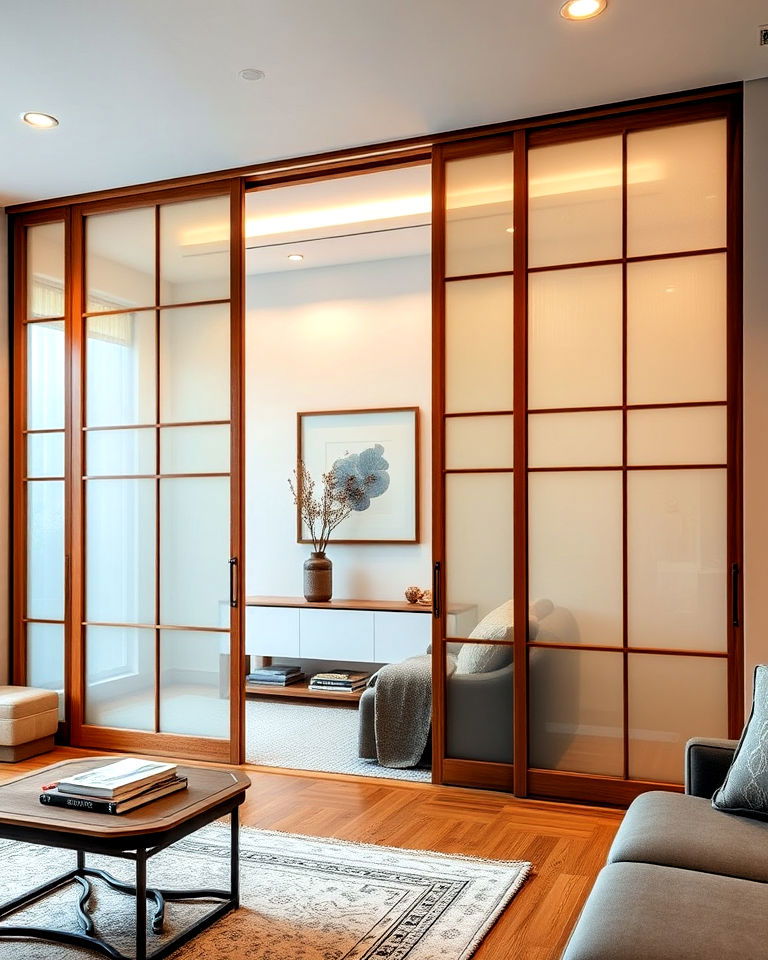
Sliding doors, often made of wood or translucent materials, are popular in Korean living rooms for their ability to create flexible spaces. These doors can easily close off the room for privacy or open it up to connect with other areas. The elegant design adds an element of traditional charm while remaining practical for modern lifestyles. Sliding doors also optimize space, especially in smaller rooms.
5. Wooden Accents and Flooring

Wood plays a significant role in Korean interior design, with various wood floor colors enhancing the overall aesthetic. Opt for wooden floors and furniture, such as sleek coffee tables or shelving units. Light wood tones, like birch or pine, create a warm and inviting environment, often seen in light wood floor kitchens. The natural grain of wood adds texture and a subtle earthy feel, keeping the space grounded and balanced, while still maintaining a clean, modern aesthetic.
6. Neutral Color Palette
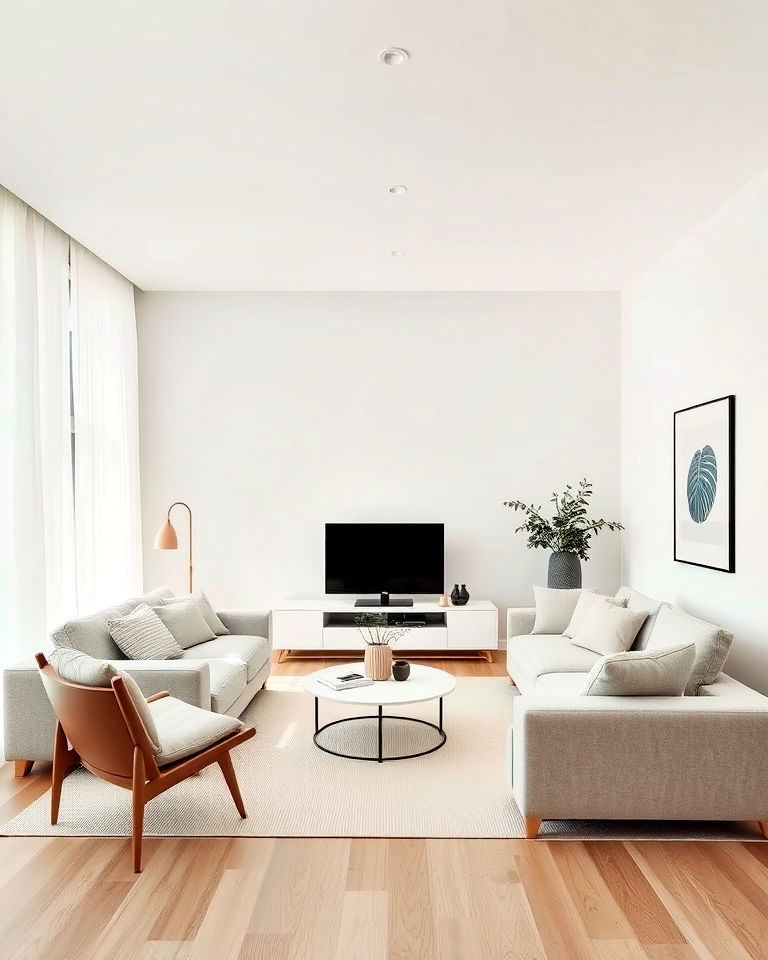
A neutral color palette of whites, creams, and soft grays is a signature of Korean living rooms, similar to the calming vibes of neutral bedroom ideas. These shades evoke a sense of calm and simplicity, allowing for a clean and harmonious space. Neutral tones also complement natural materials like wood or stone, making the room feel cohesive. This minimalist color scheme ensures that the living room remains tranquil and uncluttered.
7. Greenery for Freshness
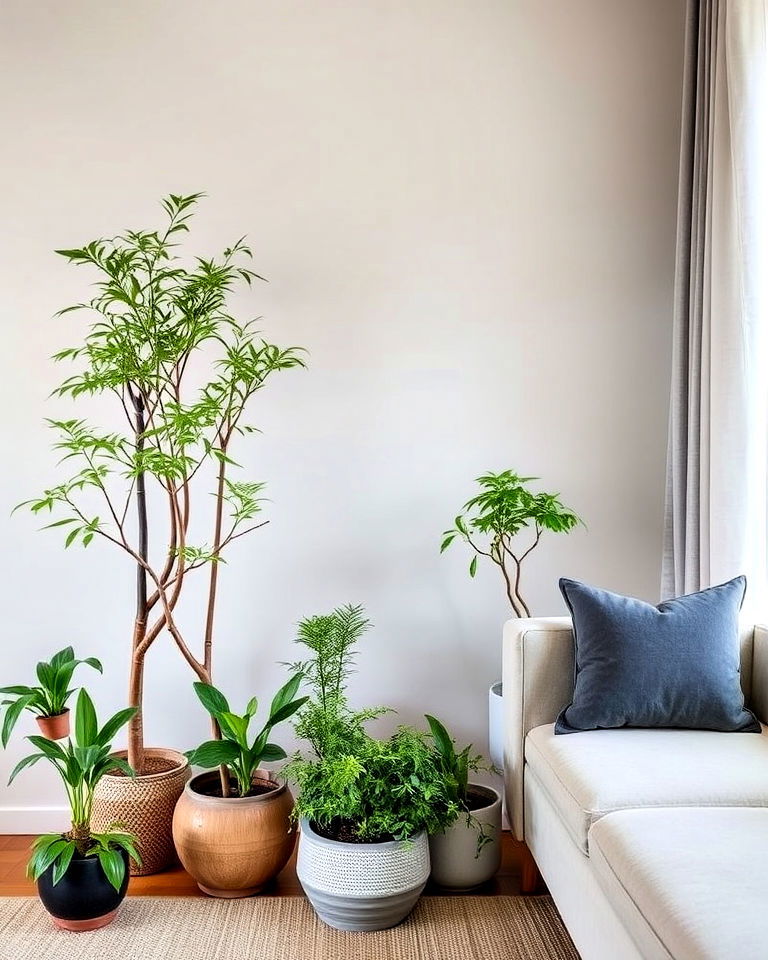
Incorporate potted plants or small indoor trees to bring life and freshness into the living room, taking inspiration from indoor garden ideas. Greenery contrasts beautifully with the neutral tones typical of Korean design, adding an organic touch to the space. Popular choices include bamboo, bonsai, or simple leafy plants. The natural elements not only improve air quality but also create a calm, rejuvenating environment that aligns with Korean design's focus on nature.
8. Traditional Korean Art and Decor

Adding traditional Korean artwork or pottery to the living room provides a personal and cultural touch. Consider framed Hanji paper art or celadon vases on a minimalist shelf. These items bring history into the modern home, reflecting Korea's rich artistic heritage. However, keep the decor sparse to maintain the minimalist ethos, ensuring the room remains uncluttered and peaceful.
9. Tatami or Floor Seating
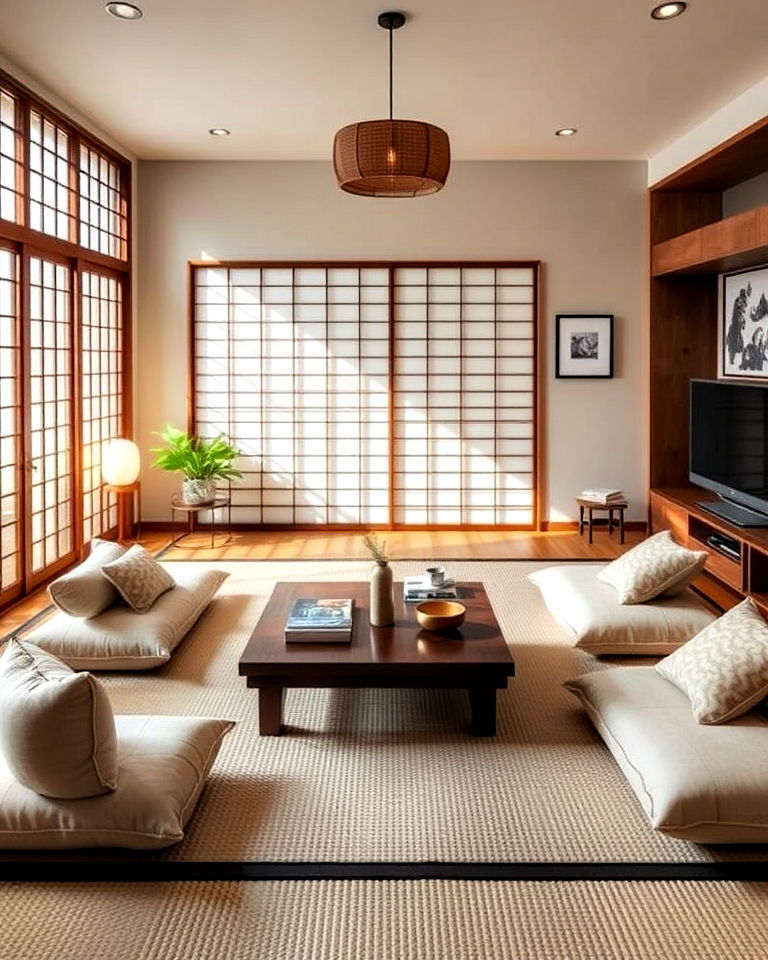
Embrace simplicity and elegance in a Korean-style living room for a modern look. For a more traditional setup, you can opt for tatami or floor seating. This style encourages a more intimate and casual atmosphere, perfect for relaxation or gatherings. Floor seating with low tables allows for easy conversation and a grounded, zen-like feel. Soft cushions in neutral colors add comfort while blending seamlessly with the rest of the decor.
10. Open Shelving and Built-In Storage
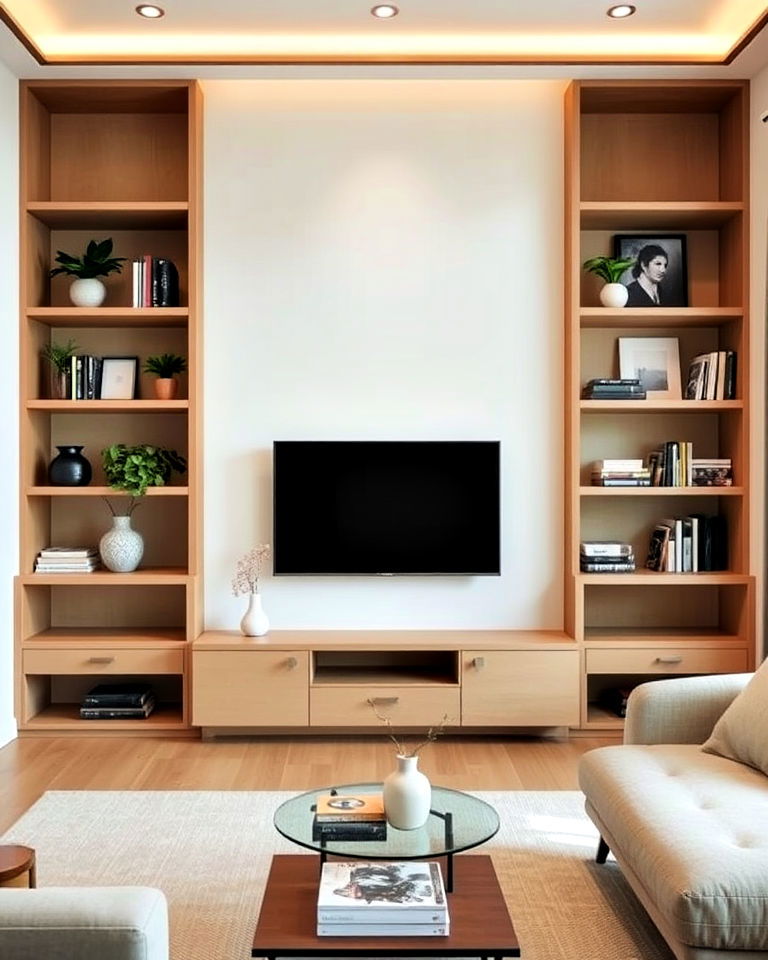
Utilize open shelving and built-in storage to maintain the room's sleek, minimalist look, which is a core aspect of minimalist decorating ideas. Built-ins can hide clutter, while open shelves offer space to display art, plants, or books without overwhelming the room. Keeping items neatly organized and off the floor creates a clean and serene environment, which is key to Korean living room design.
11. Use of Hanji Screens
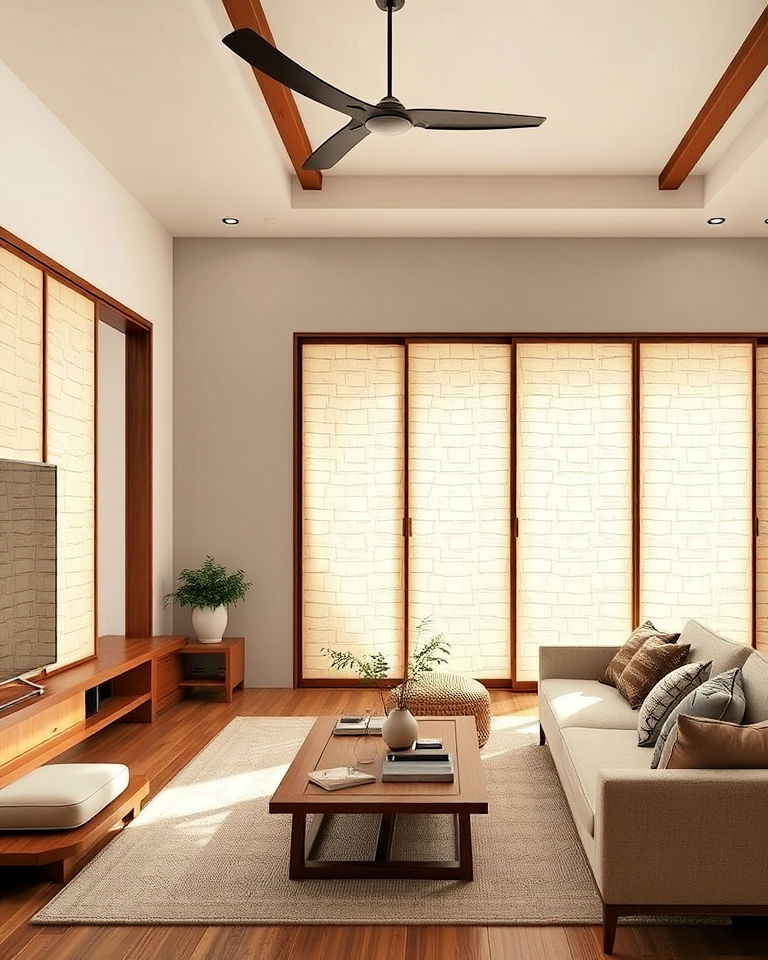
Hanji, traditional Korean paper, can be used to create decorative screens or sliding doors, serving as unique living room accent wall ideas. These screens add a unique texture and warmth to the living room while serving as functional room dividers or soft lighting filters. Hanji screens provide privacy without completely blocking light, adding an ethereal, light-diffused atmosphere to the space.
12. Low-Profile Entertainment Units
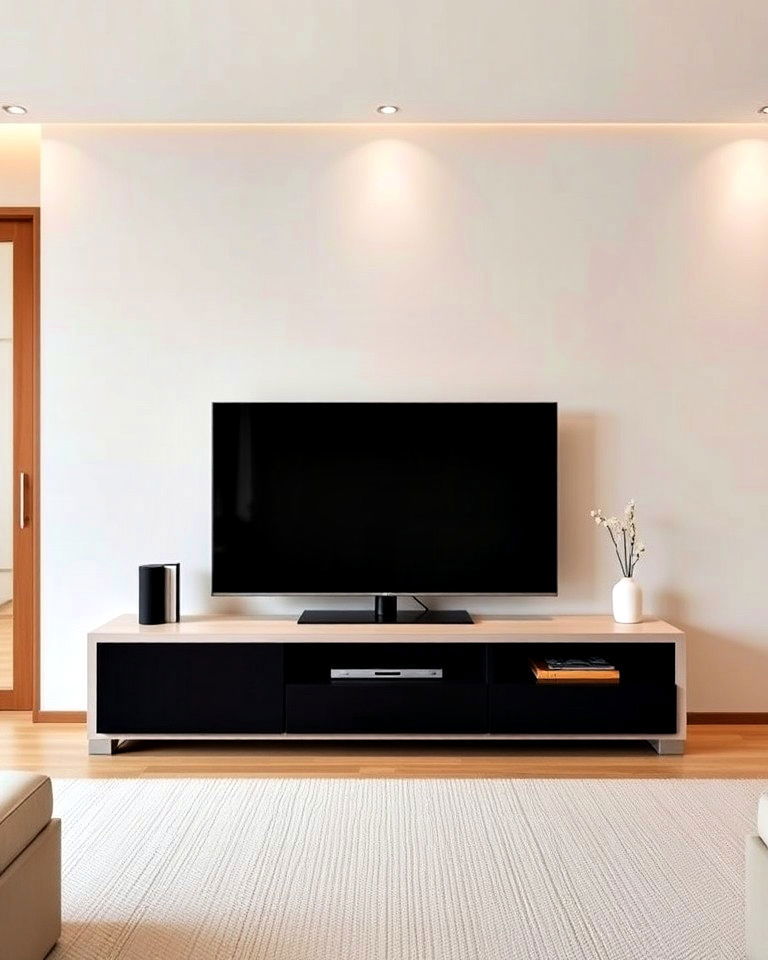
Incorporate low-profile entertainment units that sit closer to the floor, in line with the minimalist, low-furniture aesthetic of Korean living rooms. This design keeps the television or media center unobtrusive, allowing the room to remain focused on relaxation. Clean lines and simple, neutral finishes ensure that the unit blends seamlessly into the overall design without drawing too much attention.
13. Korean Calligraphy Wall Art
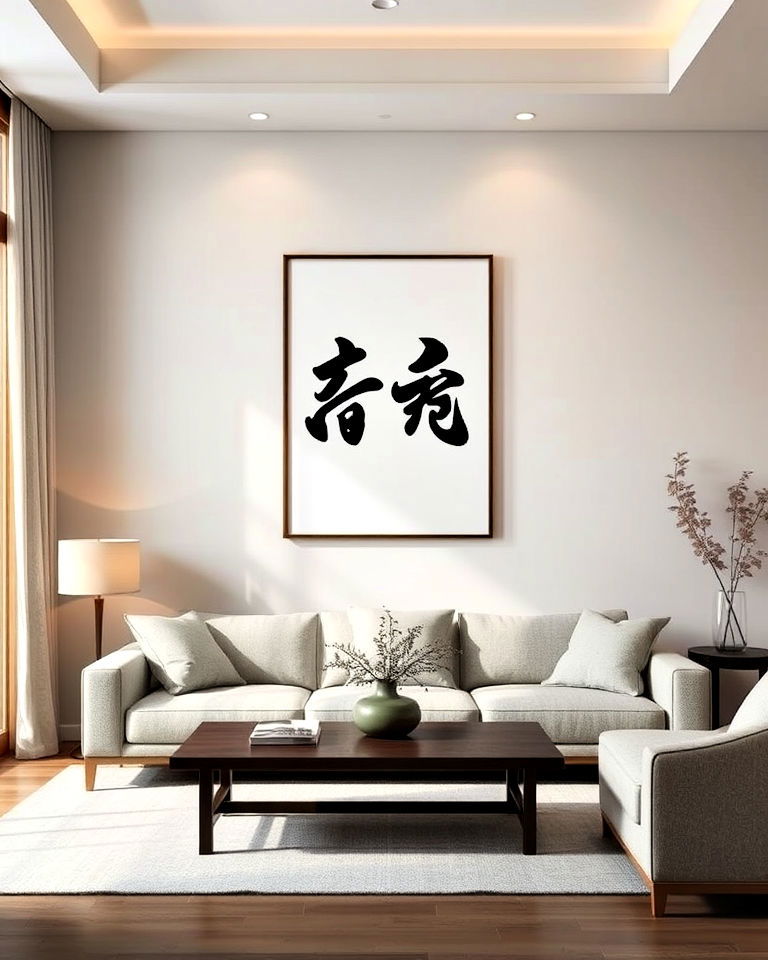
Korean calligraphy, known as Seoye, can make a subtle yet striking addition to your living room, similar to bedroom wall decor ideas. A single framed piece of calligraphy brings cultural depth and elegance. The black ink on white or neutral backgrounds fits perfectly within minimalist interiors, adding a personal touch. It is an excellent way to showcase Korean heritage while keeping the room simple and sophisticated.
14. Soft, Textured Rugs
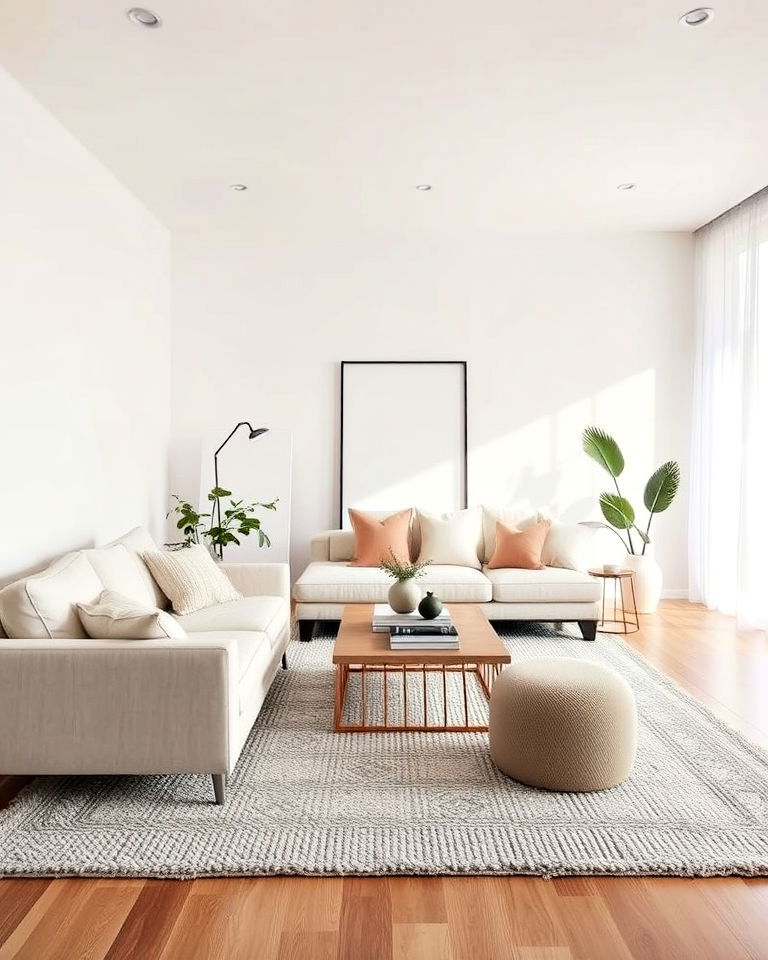
Add charm with a cute Korean living room design full of soft colors and cozy decor. Adding a soft, textured rug enhances comfort and warmth, especially in rooms with wooden floors, much like soft and cozy rugs in cozy bedroom ideas. Opt for neutral tones or simple patterns to keep with the minimalist aesthetic. These rugs not only soften the look of the room but also add comfort, especially if the living room utilizes floor seating. A wool or cotton rug can bring an extra layer of coziness.
15. Multi-Functional Spaces
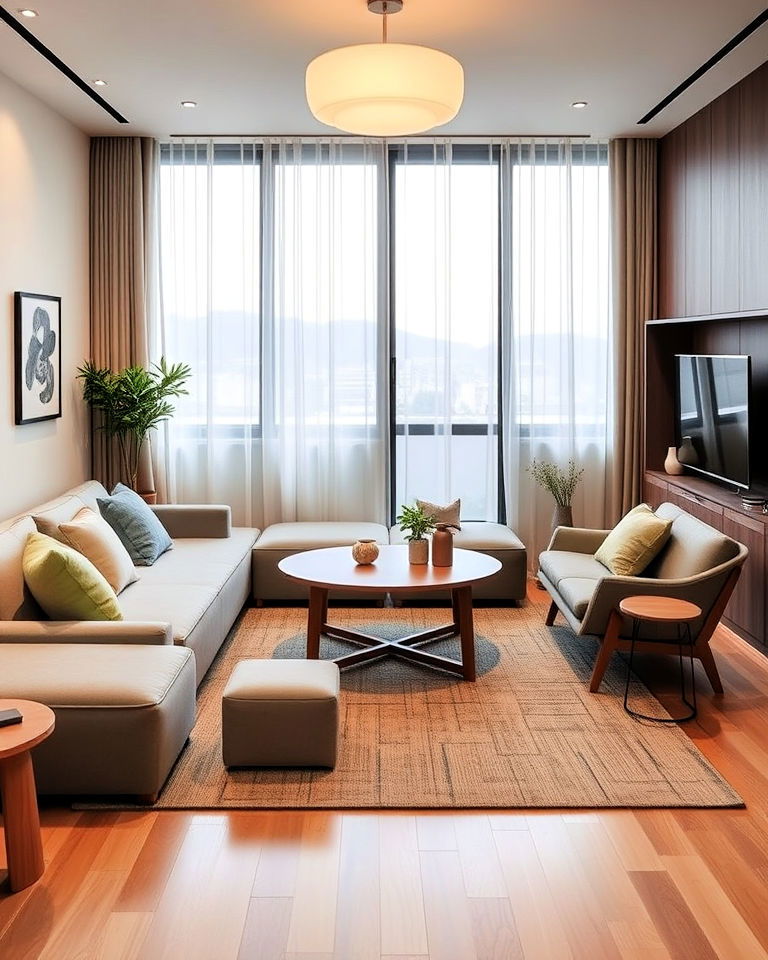
Korean living rooms often serve multiple functions, such as a place for relaxation, socializing, and dining, similar to multi-functional spaces in studio apartment layouts. Incorporate foldable or convertible furniture to maximize space and utility. A low table can transform into a dining area, while modular seating can be rearranged to suit various needs. This flexibility is key in smaller homes, ensuring the room remains practical without sacrificing style.
Conclusion:
A Korean living room effortlessly blends style and function, and this approach is more than just visual. Key elements such as floor heating (ondol) or versatile sliding doors are designed for living spaces to serve multiple roles while still appearing clean and elegant. By incorporating natural textures, neutral colors, and minimal decor, you create an inviting atmosphere perfect for relaxation. Using keywords like “Korean living room ideas” can further inspire your design journey, helping you craft a space that is both visually stunning and deeply functional.
Key Points:
- Minimalism and Low Furniture: Korean living rooms focus on simplicity, using low-profile furniture and minimal decor to create a calm, open space.
- Natural Light: Maximizing natural light through large windows and light curtains enhances the airy, serene atmosphere.
- Use of Natural Materials: Wood is a common element in floors and furniture, offering warmth and a connection to nature.
- Neutral Color Palette: Soft tones like beige, cream, and gray dominate, promoting tranquility and cohesion.
- Functional Design: Features like floor heating (ondol) and sliding doors optimize space usage and comfort, blending practicality with aesthetics.
- Cultural Accents: Traditional Korean art, pottery, and calligraphy introduce heritage without overwhelming the minimalist design.
- Greenery and Plants: Incorporating plants brings life to the space, adding freshness and an organic touch.
What to Do Next:
- Embrace Greenery: Place plants strategically to freshen the room and create a natural, relaxing atmosphere.
- Assess Your Space: Identify areas in your living room where you can simplify and introduce low furniture or minimalist design elements.
- Maximize Light: If possible, enhance natural light by removing heavy curtains or adding larger windows.
- Incorporate Natural Materials: Consider adding wooden furniture or flooring to infuse warmth into your space.
- Introduce Korean Accents: Add subtle cultural touches through art, pottery, or calligraphy to personalize the room.

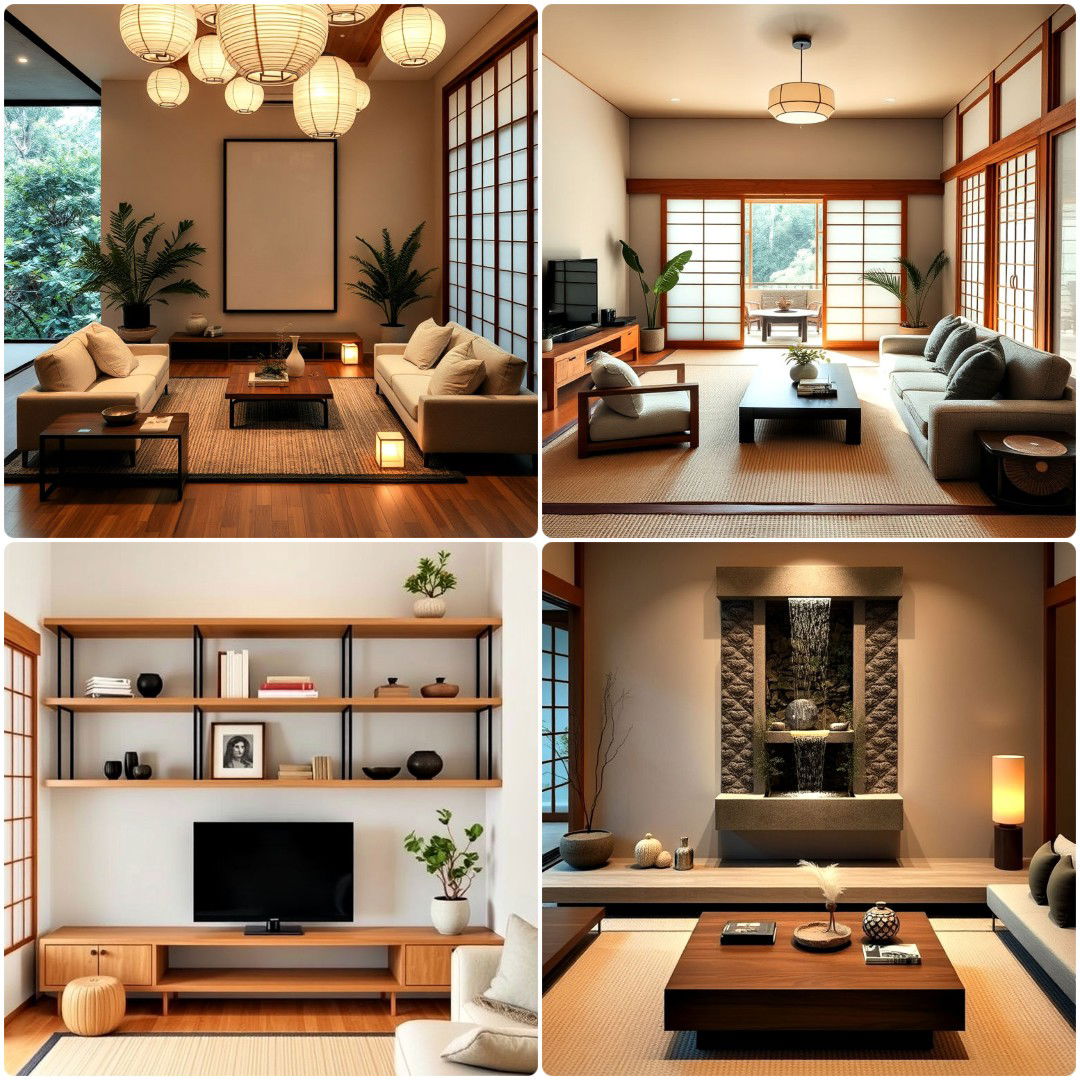
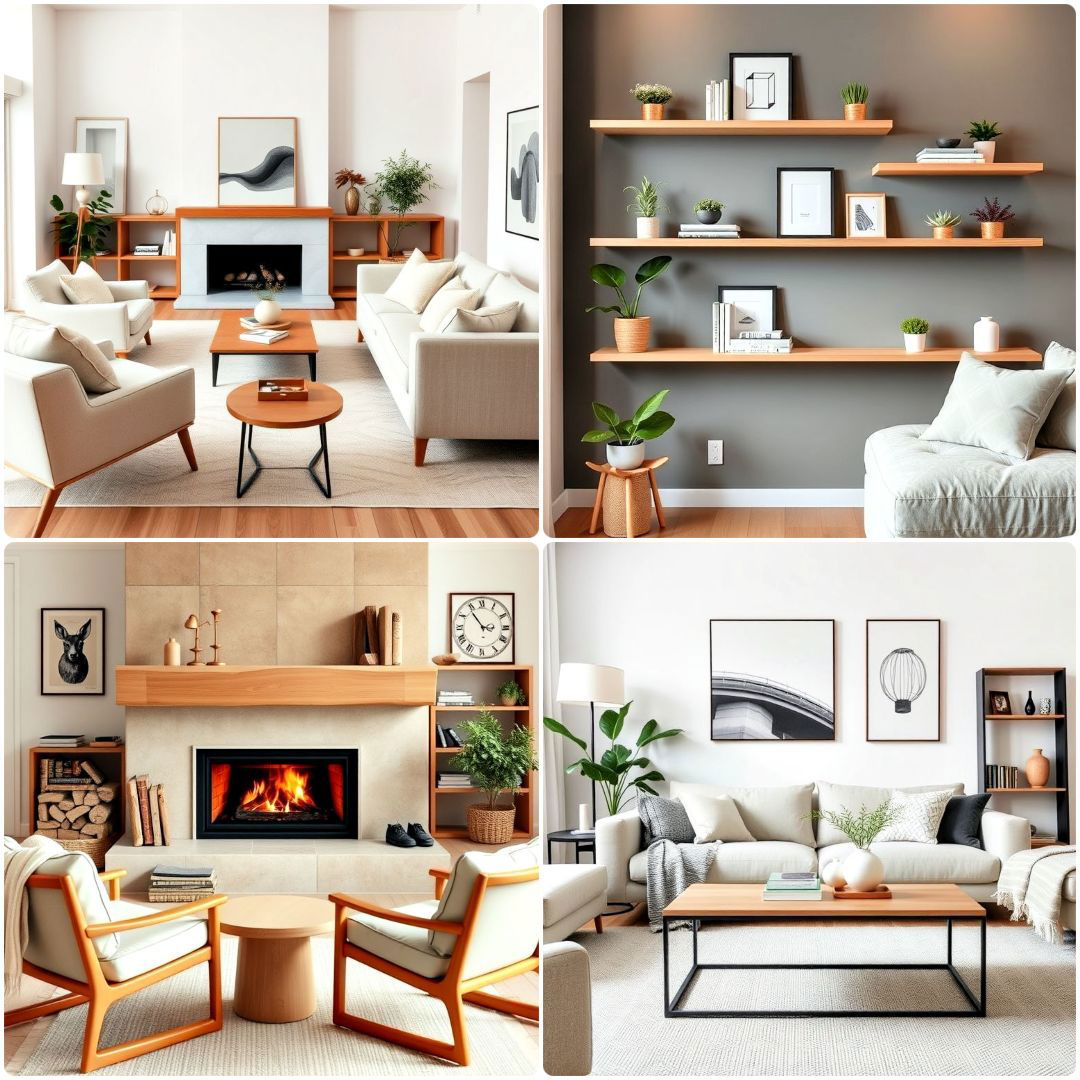
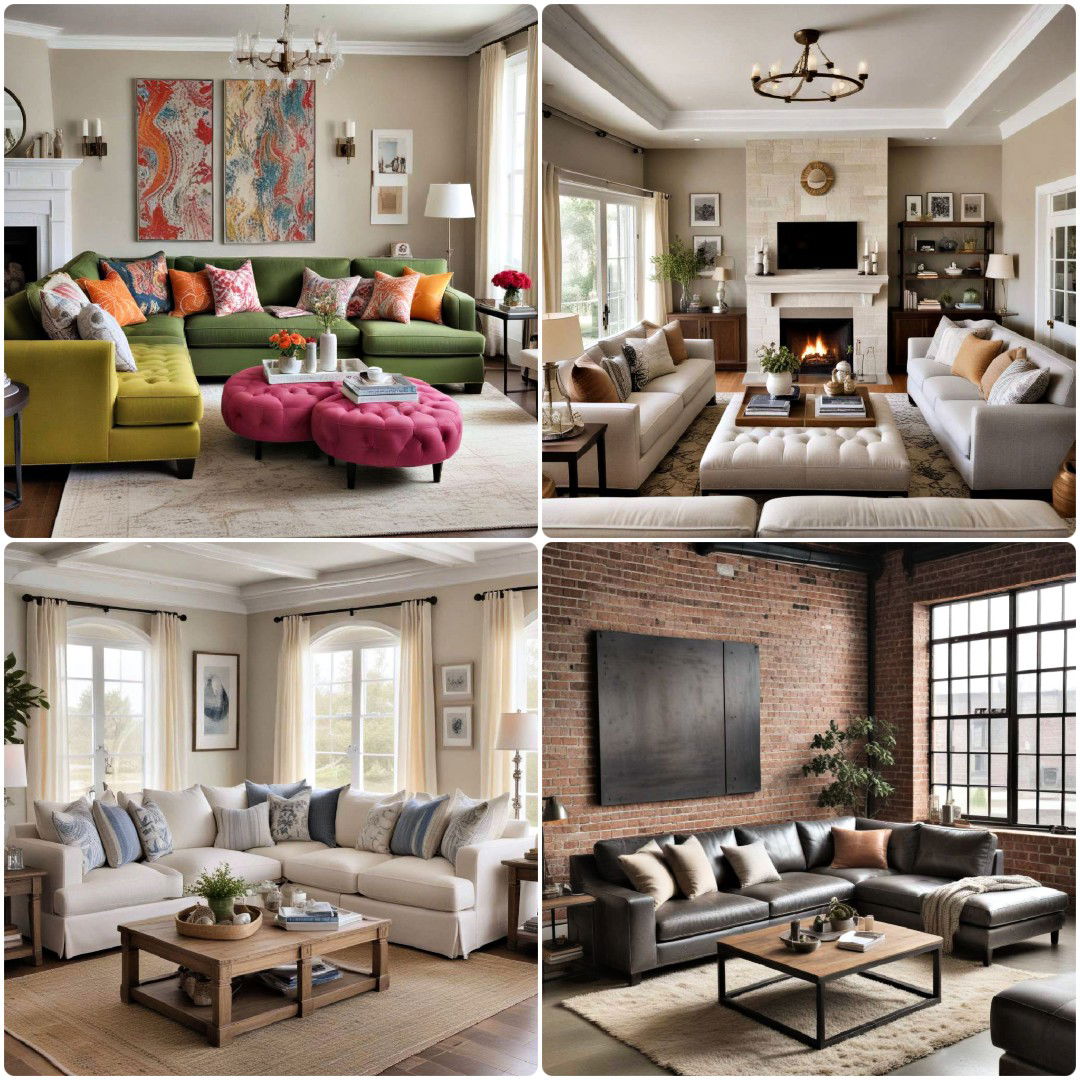
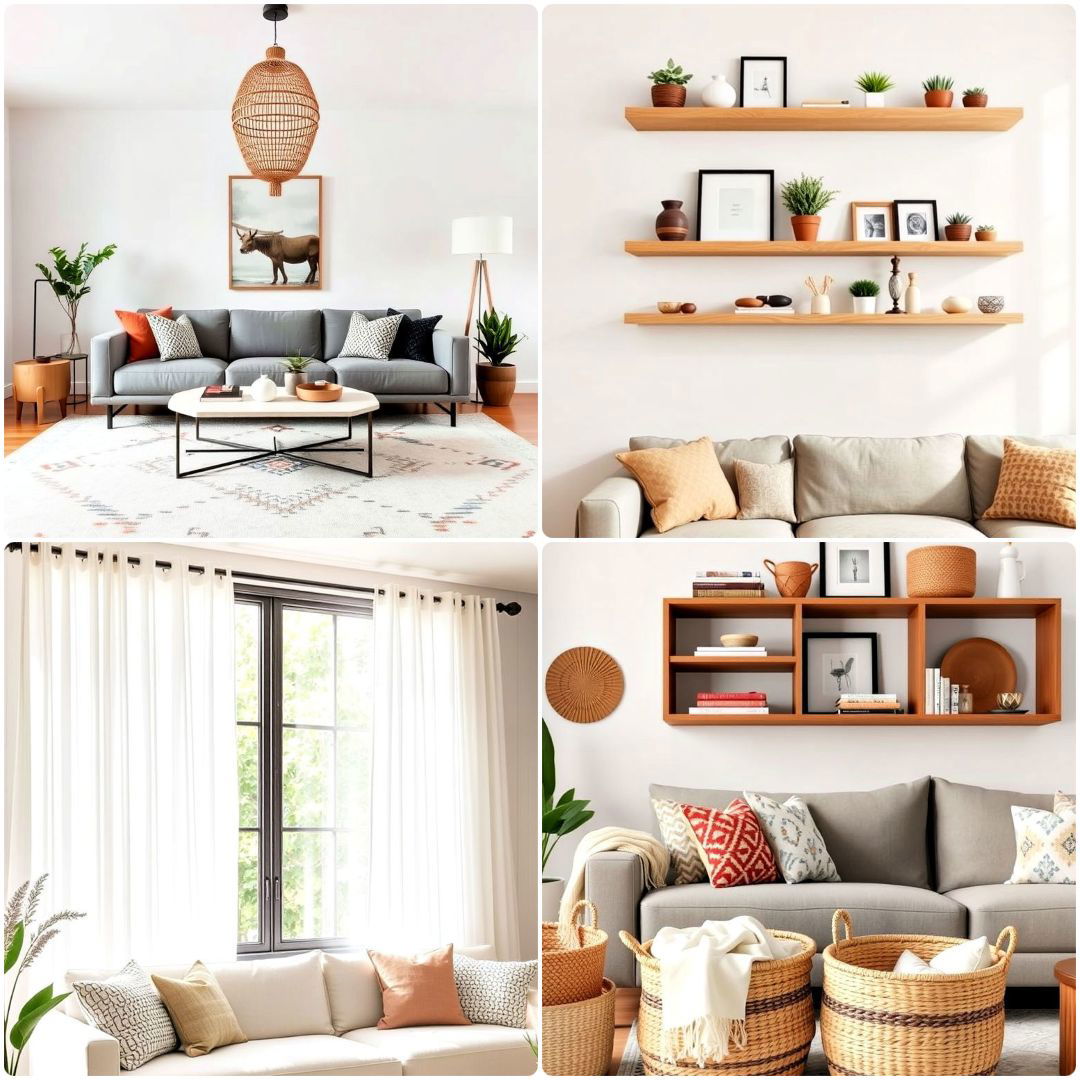
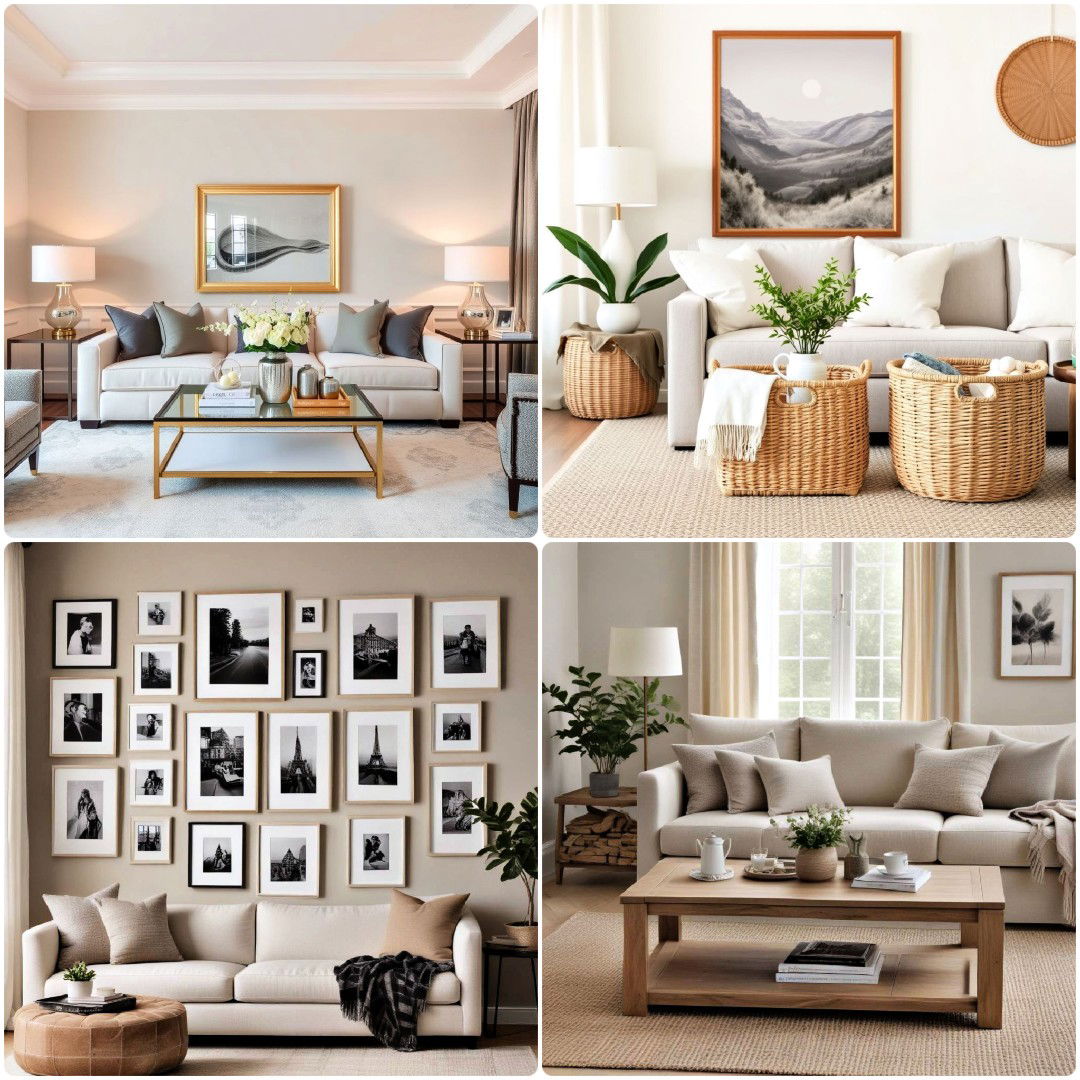
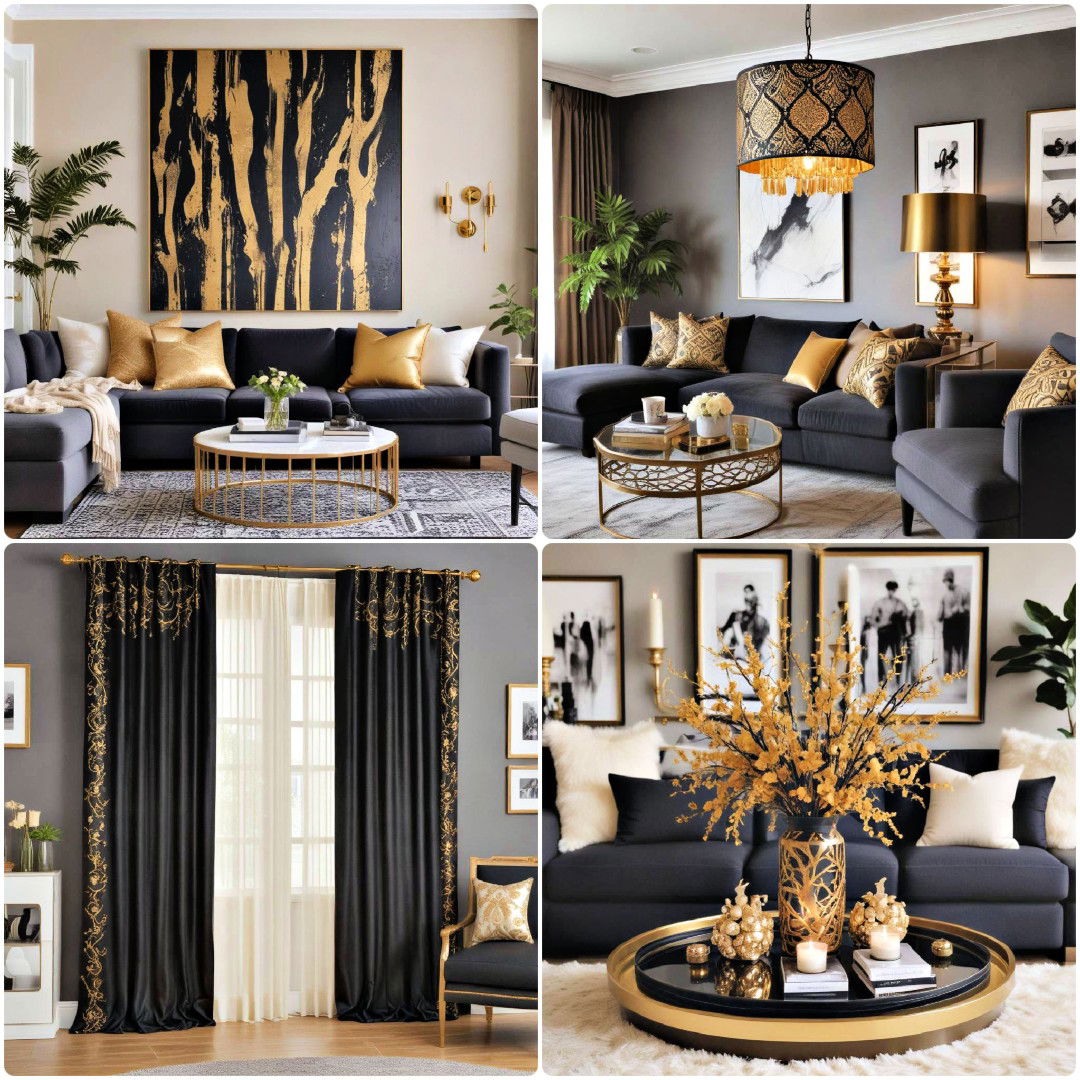
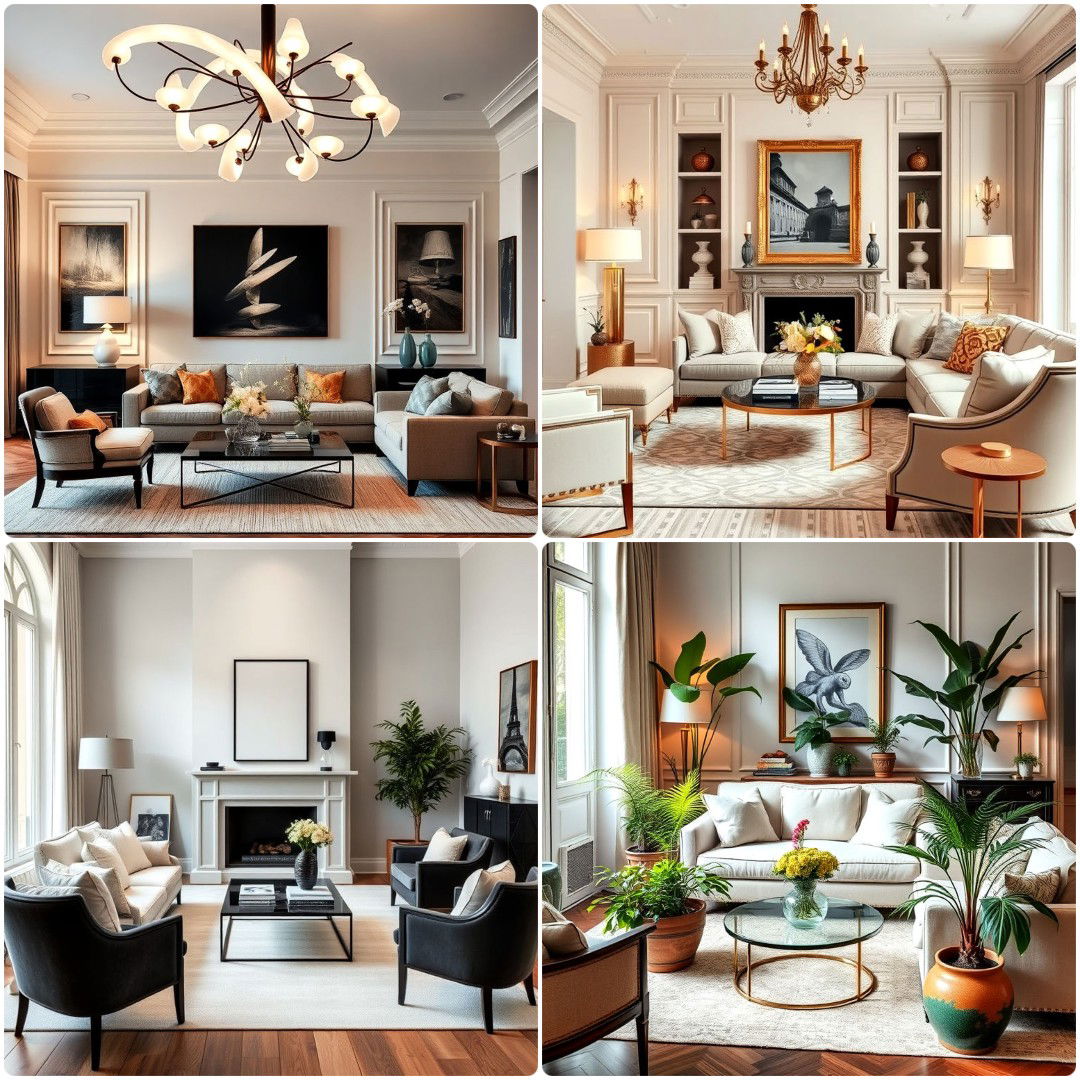
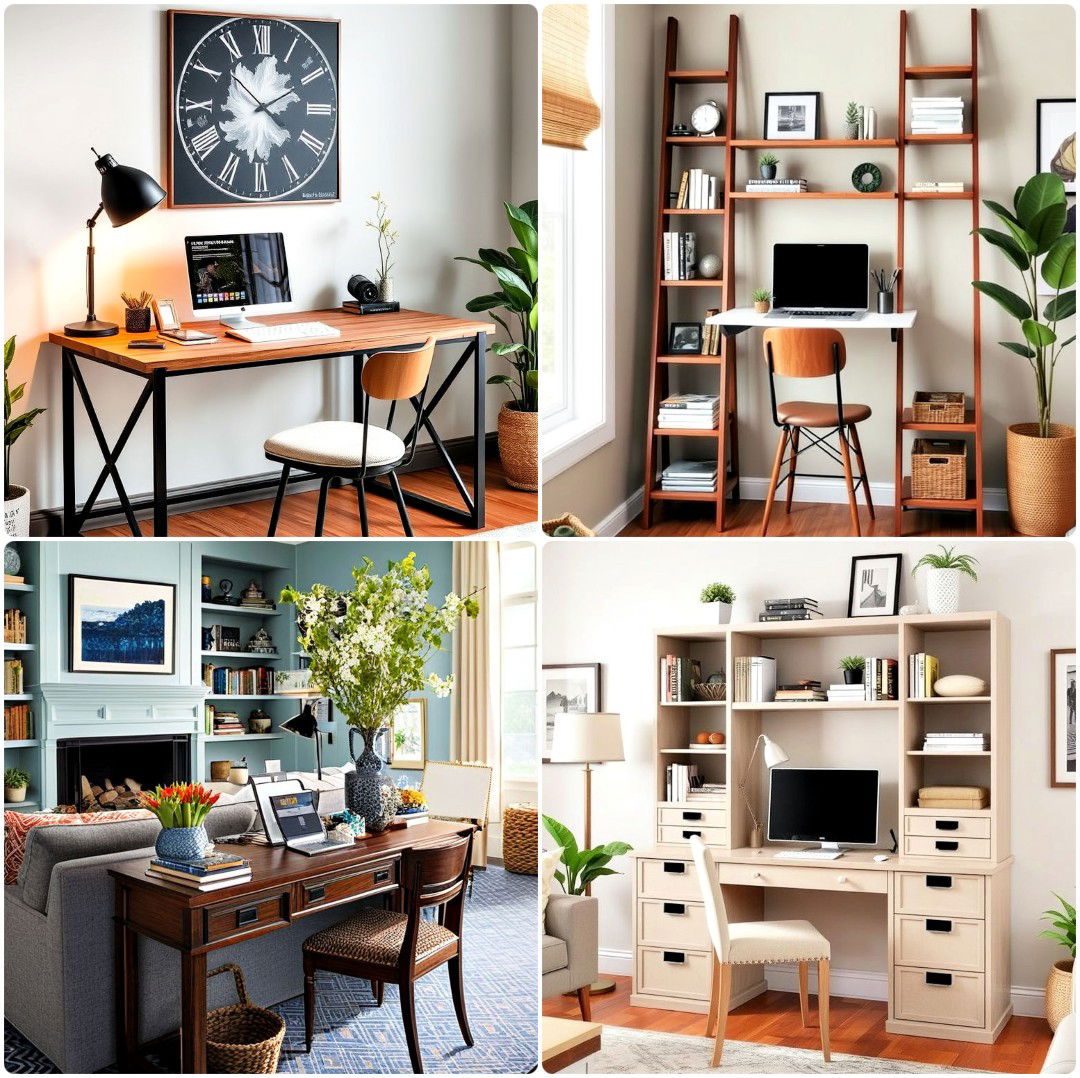
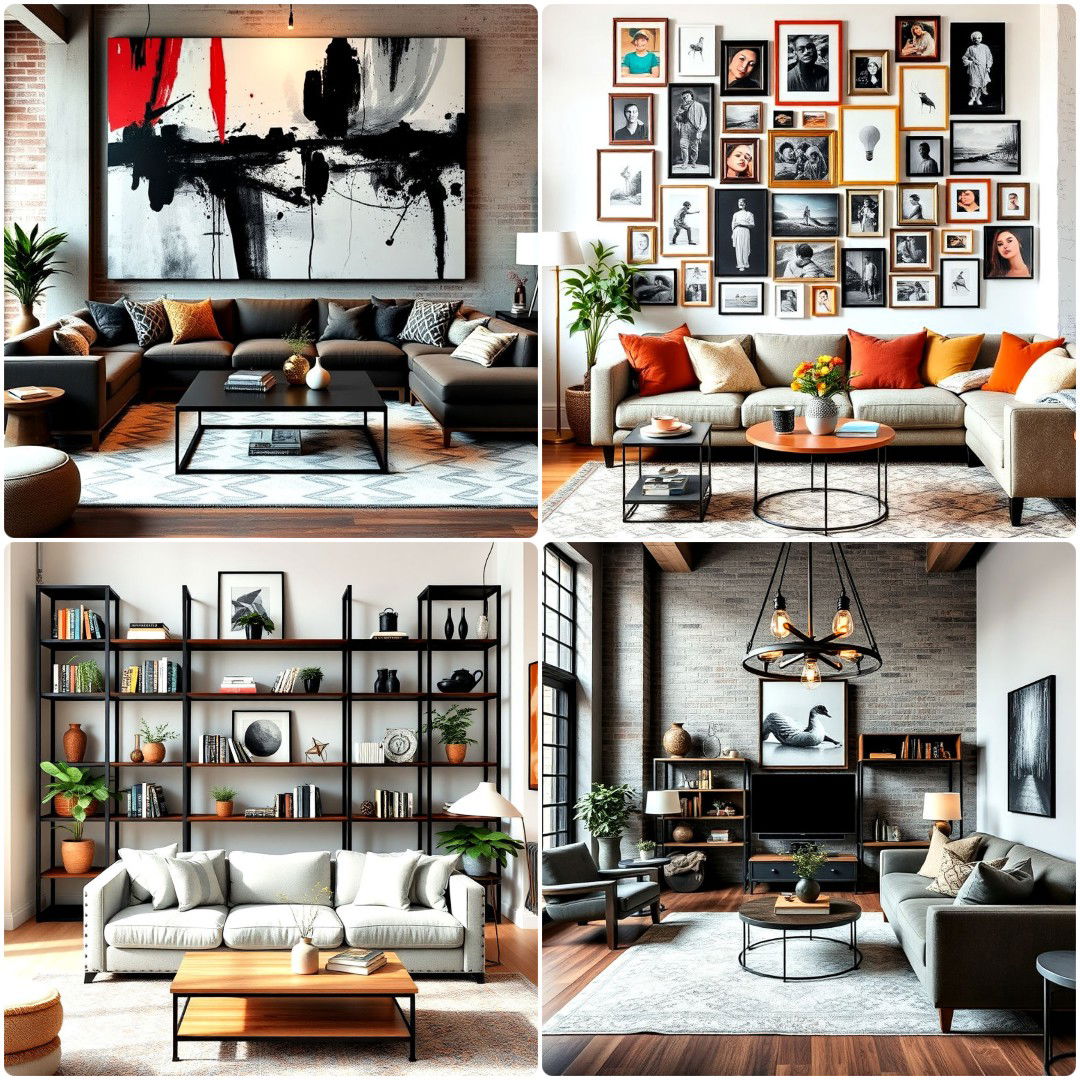

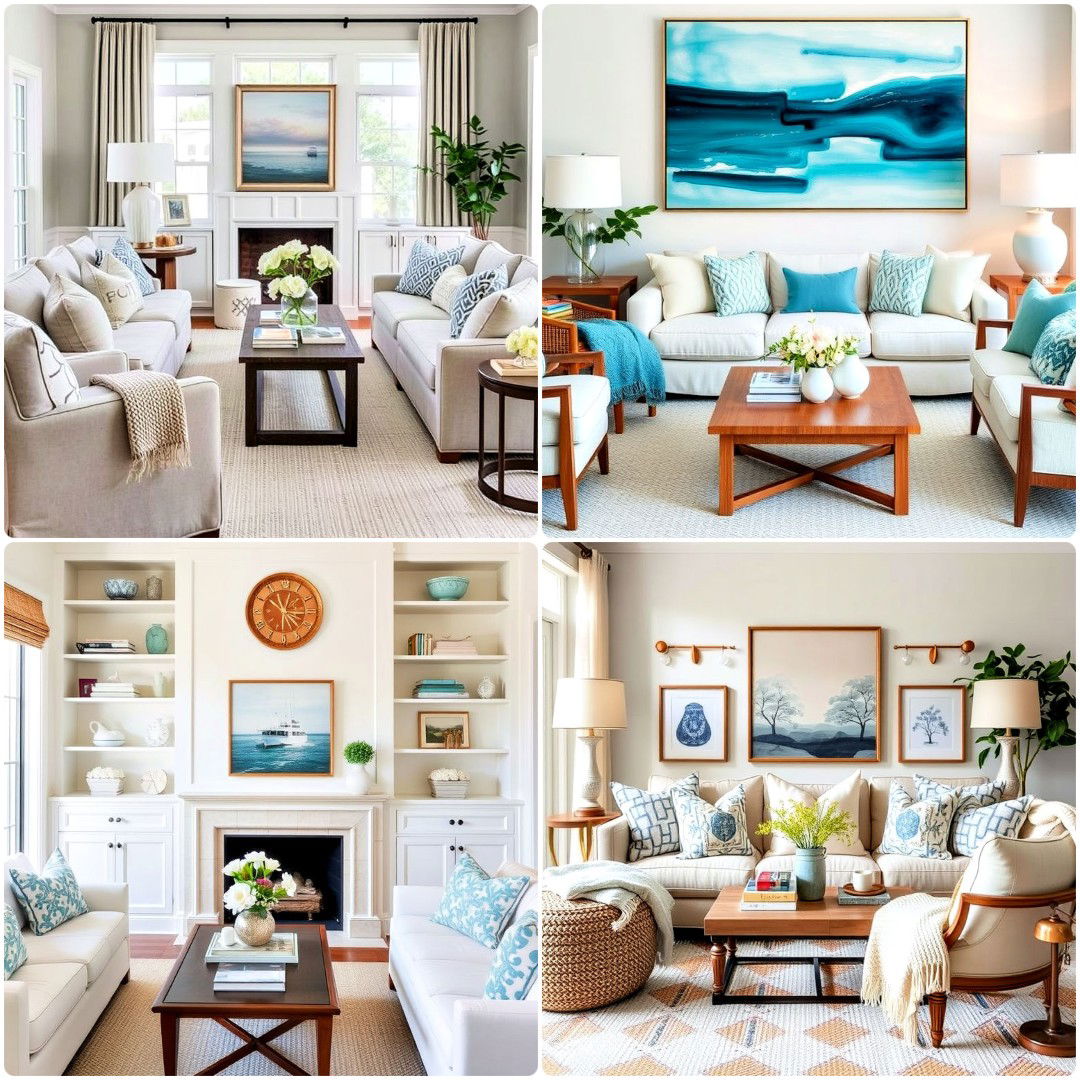
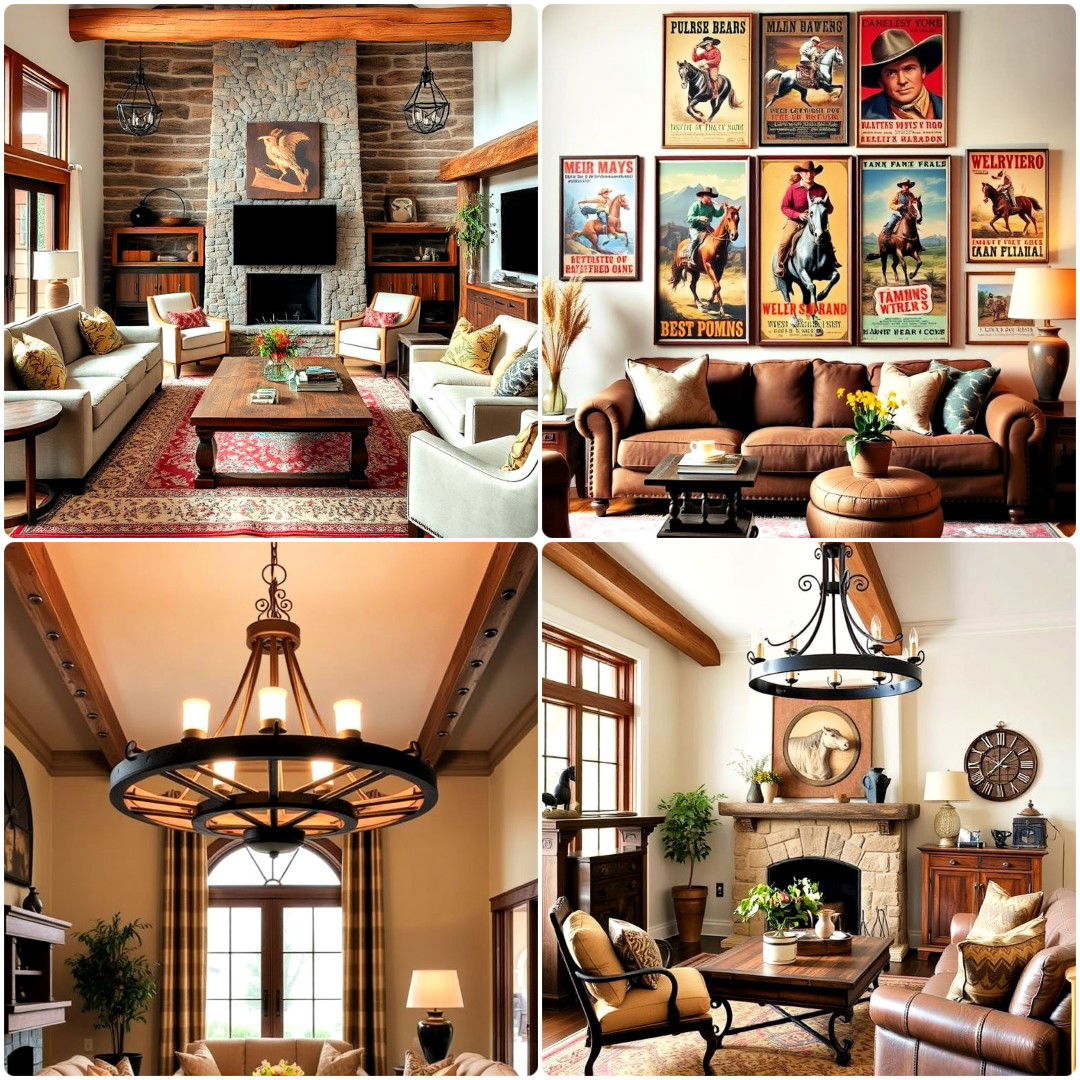
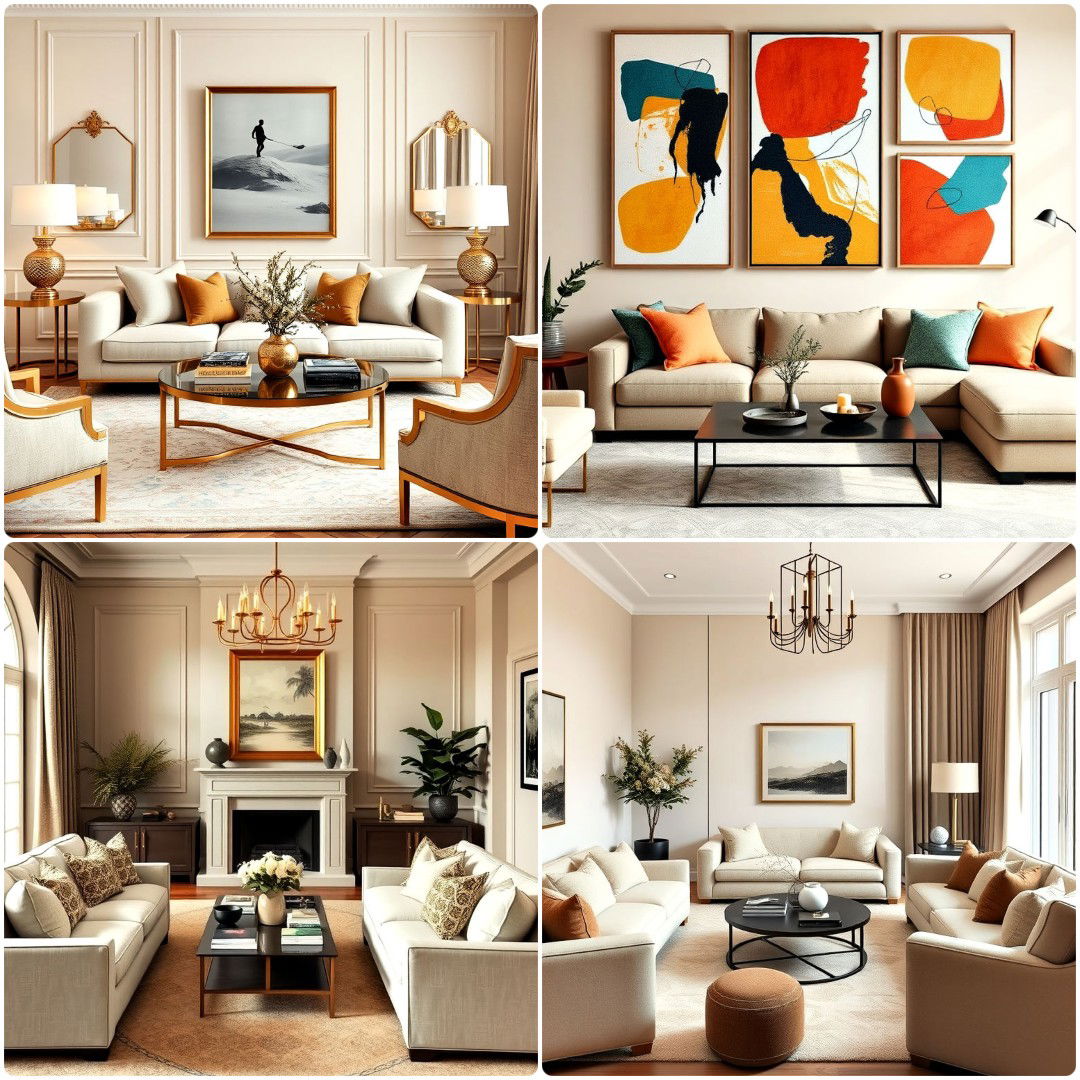
Leave a Reply